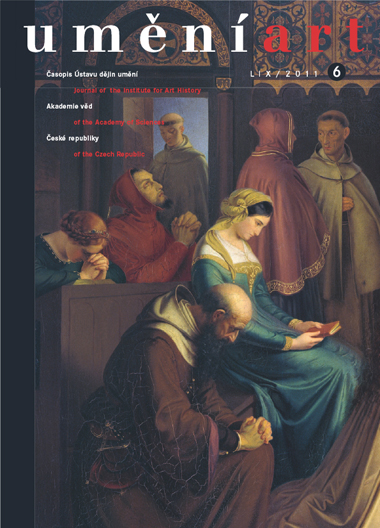Peter Kováč
Die Dornenkrone Christi und die Sainte-Chapelle in Paris. Der wahre Preis der Dornenkrone Christi, Konsekrationsdatum der Kapelle und festliche Beleuchtung der Sainte-Chapelle
In 1239 Louis IX of France acquired the Crown of Thorns for Paris, and this was one of the young king's great political achievements. Most scholarly studies tell us that he paid 135,000 livres for it, which was an enormous sum. The author of this article shows that this sum has made it into scholarship by mistake. The Cistercian monk Alberic of Trois-Fontaines wrote in his chronicle of the 1230s-1240s that Louis IX bought the Crown of Thorns for 10,000 Parisian livres and its transportation to Paris cost another 2,000 livres. The author's detailed analysis shows that this is the historically correct price. The second part of the article deals with the chosen date for the consecration of Sainte-Chapelle. Sunday, 26 April, was a special date in 1248, as it was the first Sunday after Easter, known as Low or Quasimodogeniti Sunday. The consecration of the royal chapel in Paris was manifestly planned as a symbolic act, which was connected to the king's crusade against the Muslims, and to the veneration of relics in the new holy chapel Louis IX even associated the crusade's hope of success at liberating Christ's tomb. Work to complete the chapel was hastened in order to meet the selected date. The third part of the article deals with notes on the royal iconography of Sainte-Chapelle. An important role here was played by the coronation programme (the Ordo of 1250), the text of which can be regarded as the counterpart in ideas to what the chapel was intended to incarnate as a sacred structure. The article also devotes attention to the ceremonial lighting inside Sainte-Chapelle, which is mentioned in every mediaeval description of the chapel. Illuminated and visible in every direction, the sacred building was an assurance to all of the king's subjects that before the Cross and the Crown of Thorns the canons and the king were praying for the salvation of the entire kingdom. Because Sainte-Chapelle in Paris was a genuine capella vitrea, it gave new meaning-aesthetic, ethical, artistic and social-to what Hans Jantzen once called the 'diaphane Struktur'.
Full-text in the Digital Library of the Czech Academy of Sciences:
https://kramerius.lib.cas.cz/uuid/uuid:5a4fe193-38d1-924e-8c49-a138c801fd7a
< back

